
Herbert George Wells was an English writer. Prolific in many genres, he wrote more than fifty novels and dozens of short stories. His non-fiction output included works of social commentary, politics, history, popular science, satire, biography and autobiography. Wells is now best remembered for his science fiction novels and has been called the "father of science fiction."

John Wesley was an English cleric, theologian, and evangelist who was a leader of a revival movement within the Church of England known as Methodism. The societies he founded became the dominant form of the independent Methodist movement that continues to this day.

The Hammersmith & City line is a London Underground line that runs between Hammersmith in west London and Barking in east London. Printed in pink on the Tube map, it serves 29 stations over 15.8 miles (25.5 km). Between Farringdon and Aldgate East it skirts the City of London, the capital's financial heart, hence the line's name. Its tunnels are just below the surface and are a similar size to those on British main lines. Most of the track and all stations are shared with either the District, Circle, or Metropolitan lines. Over 114 million passenger journeys are made each year on the Hammersmith & City and Circle lines.

Liverpool Street station, also known as London Liverpool Street, is a central London railway terminus and connected London Underground station in the north-eastern corner of the City of London, in the ward of Bishopsgate Without. It is the terminus of the West Anglia Main Line to Cambridge, the Great Eastern Main Line to Norwich, commuter trains serving east London and destinations in the East of England, and the Stansted Express service to Stansted Airport.

Covent Garden is a district in London, on the eastern fringes of the West End, between St Martin's Lane and Drury Lane. It is associated with the former fruit-and-vegetable market in the central square, now a popular shopping and tourist site, and with the Royal Opera House, itself known as "Covent Garden". The district is divided by the main thoroughfare of Long Acre, north of which is given over to independent shops centred on Neal's Yard and Seven Dials, while the south contains the central square with its street performers and most of the historical buildings, theatres and entertainment facilities, including the London Transport Museum and the Theatre Royal, Drury Lane.

John Gould was an English ornithologist. He published a number of monographs on birds, illustrated by plates produced by his wife, Elizabeth Gould, and several other artists, including Edward Lear, Henry Constantine Richter, Joseph Wolf and William Matthew Hart. He has been considered the father of bird study in Australia and the Gould League in Australia is named after him. His identification of the birds now nicknamed "Darwin's finches" played a role in the inception of Darwin's theory of evolution by natural selection. Gould's work is referenced in Charles Darwin's book, On the Origin of Species.

The Order of St John, short for Most Venerable Order of the Hospital of Saint John of Jerusalem and also known as St John International, is a British royal order of chivalry constituted in 1888 by royal charter from Queen Victoria and dedicated to St John the Baptist.

Hatch End is a railway station in the London Borough of Harrow, in north London, and in Travelcard Zone 6. London Underground's Bakerloo line trains served the station from 16 April 1917 until 24 September 1982. London Overground services on the Watford DC Line from London Euston currently serve this station.
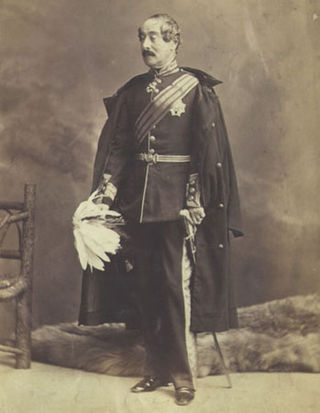
Sir Charles Hastings Doyle was a British military officer and he was the second Lieutenant Governor of Nova Scotia post Confederation and the first Lieutenant Governor of New Brunswick.

Paradoxurinae is a subfamily of the feliform viverrids that was denominated and first described by John Edward Gray in 1864. Pocock subordinated the genera Paradoxurus, Paguma and Arctictis to this subfamily.
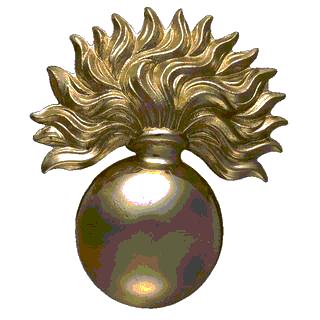
The Grenadier Guards is an infantry regiment of the British Army. It can trace its lineage back to 1656 when Lord Wentworth's Regiment was raised in Bruges to protect the exiled Charles II. In 1665, this regiment was combined with John Russell's Regiment of Guards to form the current regiment, known as the 1st Regiment of Foot Guards. Since then, the regiment has filled both a ceremonial and protective role as well as an operational one. In 1900, the regiment provided a cadre of personnel to form the Irish Guards; while later, in 1915 it also provided the basis of the Welsh Guards upon their formation.
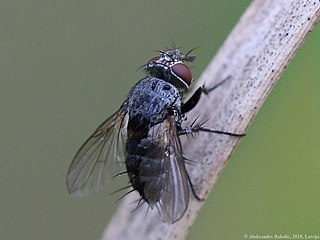
Peribaea is a genus of flies in the family Tachinidae.
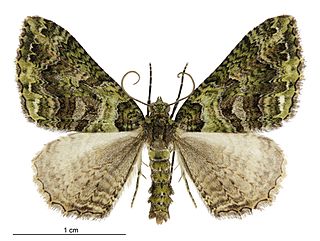
Austrocidaria similata is a species of moth of the family Geometridae. It endemic to New Zealand.
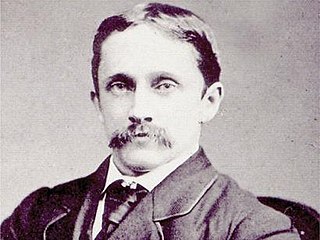
Claude Reignier Conder was an English soldier, explorer and antiquarian. He was a great-great-grandson of Louis-François Roubiliac and grandson of editor and author Josiah Conder.

The Vilayet of Kastamonu was a first-level administrative division (vilayet) of the Ottoman Empire, established in 1867 and abolished in 1922. At the beginning of the 20th century, the vilayet reportedly had an area of 19,300 square miles (50,000 km2), while the preliminary results of the first Ottoman census of 1885 gave the population as 1,009,460. The accuracy of the population figures ranges from "approximate" to "merely conjectural" depending on the region from which they were gathered.

The Naval Recruitment Training Agency (NRTA) originally called the Naval Training Department was first established in 1944 as a department within the Admiralty it underwent numerous name changes until 1 April 1995 as a new agency of the Navy Department of the British Ministry of Defence. Its role was to contribute to the operational capability of the United Kingdom Armed Forces by recruiting to the Naval Service, delivering training to the Defence community it was administered by the Chief Executive (NRTA)/Flag Officer, Training and Recruitment it was abolished in 2005.
Ablabera similata is a beetle discovered by Hermann Burmeister in 1855. No sub-species named in Catalogue of Life.

The Directorate of Navigation and Tactical Control (Naval) was a directorate of the Navy Department, Naval Staff first established in 1912 as the Navigation Department of Hydrographic Department of the Admiralty. In 1945 it was renamed the Navigation Division and assigned to the Admiralty Naval Staff. In 1946 it was re designated Navigation and Direction Division until 1966 and now part of the Navy Department Naval Staff it was renamed the Directorate of Navigation and Tactical Control (Naval). The staff directorate was administered by the Director Navigation Tactical Control (Naval) who reported to the Assistant Chief of the Naval Staff (Warfare) it existed until 1968.

The Counsel to the Navy Department, Ministry of Defence originally called Counsel to the Navy Board was an appointed legal adviser to the Royal Navy from 1673 to 1995.
















